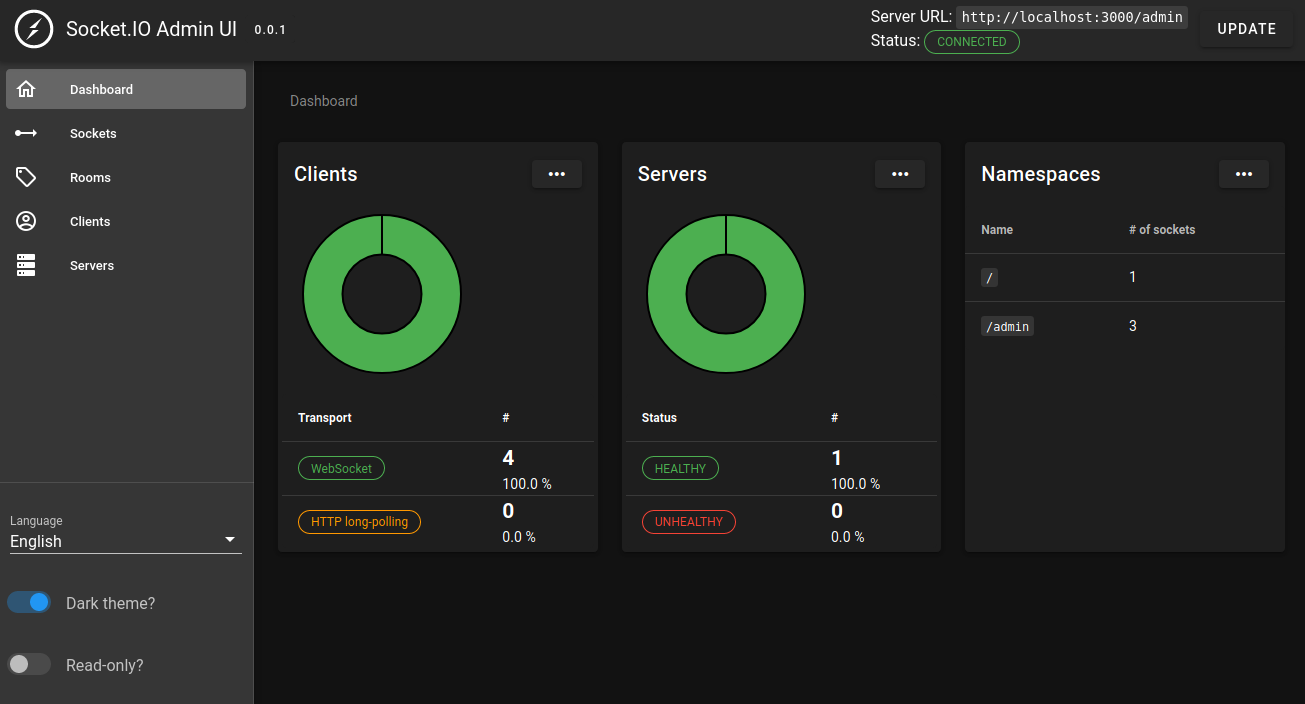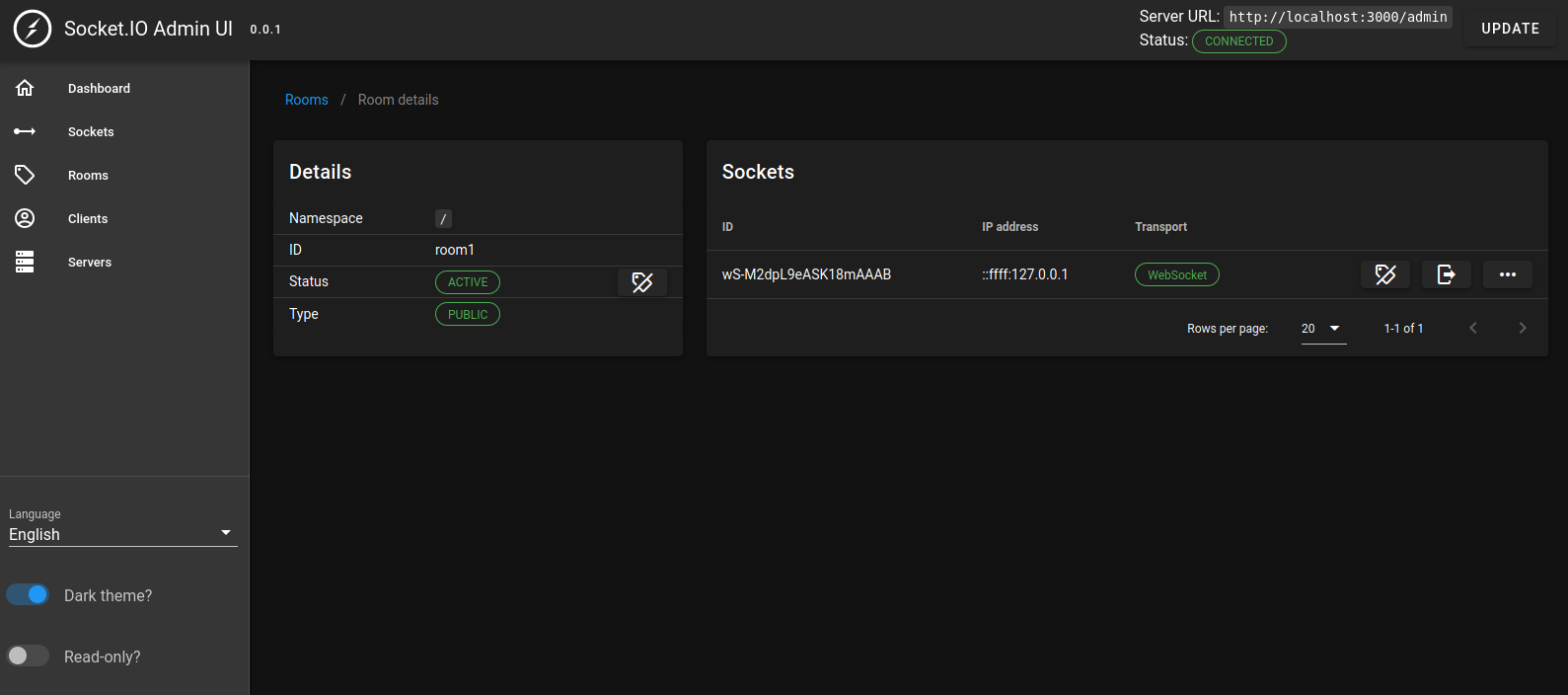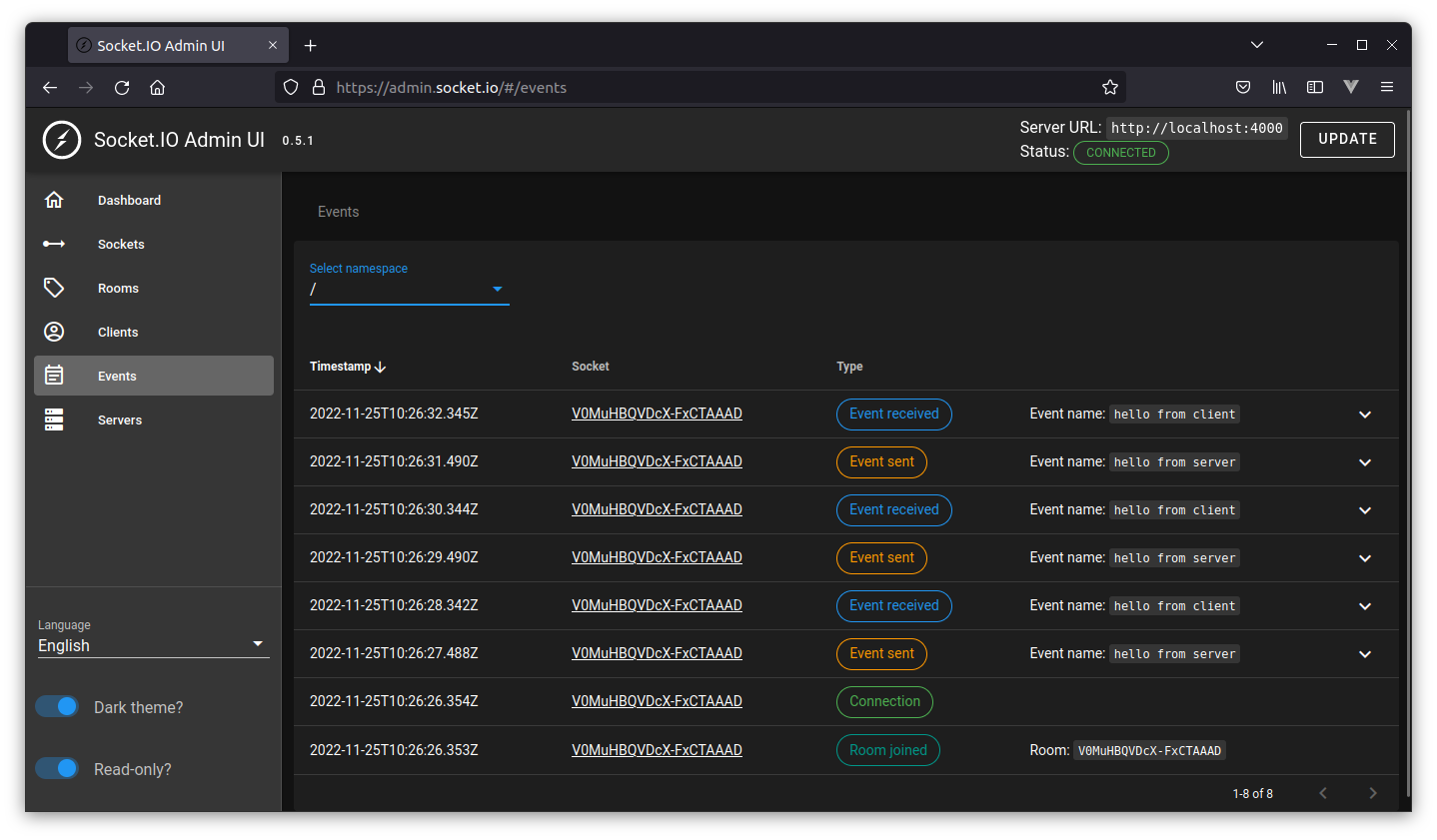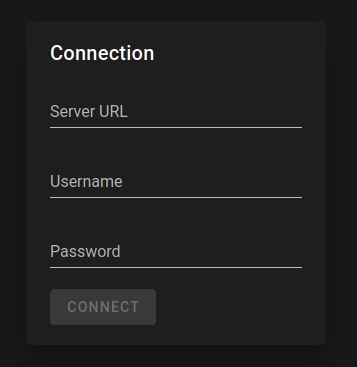管理界面
Socket.IO 管理界面可用于概述 Socket.IO 部署的状态。
源代码可在以下位置找到:https://github.com/socketio/socket.io-admin-ui/
托管版本链接:https://admin.socket.io/
当前功能
- 当前连接的服务器和客户端概述

- 每个套接字实例的详细信息(活动传输、握手、房间等)

- 每个房间的详细信息

- 服务器发出或接收的每个事件的详细信息

- 管理操作(加入、离开、断开连接)
如果您有任何反馈/建议,请随时提出!
安装
服务器端
首先,安装 @socket.io/admin-ui 包
npm i @socket.io/admin-ui
然后在您的 Socket.IO 服务器上调用 instrument 方法
const { createServer } = require("http");
const { Server } = require("socket.io");
const { instrument } = require("@socket.io/admin-ui");
const httpServer = createServer();
const io = new Server(httpServer, {
cors: {
origin: ["https://admin.socket.io"],
credentials: true
}
});
instrument(io, {
auth: false,
mode: "development",
});
httpServer.listen(3000);
该模块与以下内容兼容
- Socket.IO v4 服务器
- Socket.IO v3 服务器(>= 3.1.0),但没有对房间的操作(加入、离开、断开连接)
使用 NestJS 的示例
import { instrument } from "@socket.io/admin-ui";
@WebSocketGateway()
export class MyGateway {
// ...
afterInit() {
instrument(this.server, {
auth: false,
mode: "development",
});
}
}
客户端
然后您可以前往 https://admin.socket.io,或托管 ui/dist 文件夹中的文件 此处。
重要提示:https://admin.socket.io 上的网站完全是静态的(托管在 Vercel 上),我们不会(也永远不会)存储有关您或您的浏览器的任何信息(无跟踪、无分析等)。也就是说,自行托管文件完全没问题。
您应该看到以下模态

请输入您的服务器的 URL(例如,https://:3000 或 https://example.com)以及凭据(如果适用)(请参阅 auth 选项 下方)。
可用选项
auth
默认值:-
此选项是必需的。您可以禁用身份验证(请谨慎使用)
instrument(io, {
auth: false
});
或使用基本身份验证
instrument(io, {
auth: {
type: "basic",
username: "admin",
password: "$2b$10$heqvAkYMez.Va6Et2uXInOnkCT6/uQj1brkrbyG3LpopDklcq7ZOS" // "changeit" encrypted with bcrypt
},
});
请注意,bcrypt 包目前不支持以 $2y$ 前缀开头的哈希,该前缀被一些 BCrypt 实现使用(例如 https://bcrypt-generator.com/ 或 https://www.bcrypt.fr/)。您可以使用以下方法检查哈希的有效性:
$ node
> require("bcryptjs").compareSync("<the password>", "<the hash>")
true
您可以使用以下方法生成有效的哈希:
$ node
> require("bcryptjs").hashSync("changeit", 10)
'$2b$10$LQUE...'
另请参阅
namespaceName
默认值:/admin
将创建用于处理管理任务的命名空间的名称。
instrument(io, {
namespaceName: "/custom"
});
此命名空间是经典的 Socket.IO 命名空间,您可以使用以下方法访问它:
const adminNamespace = io.of("/admin");
更多信息 此处。
readonly
默认值:false
是否将管理界面置于只读模式(不允许加入、离开或断开连接)。
instrument(io, {
readonly: true
});
serverId
默认值:require("os").hostname()
给定服务器的 ID。如果您在同一台机器上有多个 Socket.IO 服务器,则需要为它们提供不同的 ID
instrument(io, {
serverId: `${require("os").hostname()}#${process.pid}`
});
store
默认值:new InMemoryStore()
存储用于存储会话 ID,以便用户在重新连接时不必重新输入凭据。
如果您在多服务器设置中使用基本身份验证,则应提供自定义存储
const { instrument, RedisStore } = require("@socket.io/admin-ui");
instrument(io, {
store: new RedisStore(redisClient)
});
mode
默认值:development
在生产模式下,服务器不会发送有关套接字实例和房间的所有详细信息,从而减少了仪器化的内存占用。
instrument(io, {
mode: "production"
});
生产模式也可以使用 NODE_ENV 环境变量启用
NODE_ENV=production node index.js
工作原理
源代码可在以下位置找到:https://github.com/socketio/socket.io-admin-ui/
instrument 方法只是
- 创建一个 命名空间,并在适用时添加身份验证 中间件
- 为每个现有命名空间的
connection和disconnect事件注册监听器,以跟踪套接字实例 - 注册一个计时器,它将定期将服务器的统计信息发送到 UI
- 注册从 UI 发送的
join、leave和_disconnect命令的处理程序